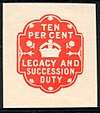Taxation in Pakistan
Pakistan's current Taxation system is defined by Income Tax Ordinance 2001 (for direct taxes) and Sales Tax Act 1990 (for indirect taxes) and administrated by Federal Board of Revenue (FBR).
History
Income Tax Act of 1929
The Income Tax Act of 1929 was prevalent during the British Raj and was inherited by both the governments of India and Pakistan upon independence and partition in 1947. This act initially formed the basis of both countries' Income Tax codes.
Income Tax Ordinance (1979)
The Income Tax Ordinance was the first law on Income Tax which was promulgated in Pakistan from 1 July 1979 by the Government of Pakistan.
Income Tax Ordinance 2001
To update the tax laws and bring the country's tax laws into line with international standards, the Income Tax Ordinance 2001 was promulgated on 13 September 2001. It became effective from 1 July 2002.
IT rules 2002
IT (Income Tax) rules 2002 were promulgated by the Federal Board of Revenue (FBR) on 1 July 2002 in exercise its powers granted under section 237 of the Ordinance.
Problems
Taxation in Pakistan is a complex system of more than 70 unique taxes administered by at least 37 agencies of the Government of Pakistan.[1]
According to the International Development Committee, in 2013 Pakistan had a lower-than-average tax take. Only 0.57% of Pakistanis, or 768,000 people out of a population of 190 million pay income tax.[2]
Direct taxes / Income Taxes
Federal income taxes are administered by the Federal Board of Revenue. Period from July 1 to June 30 is considered as a normal tax year for Pakistan tax law purposes.
Corporate Income tax rates Currently, the Corporate Income tax rate is 29% for tax year 2019 and onwards whereas corporate tax rate is 35% for Banking Industry for TY 2019.
In addition to Corporate Tax, there are other applicable income taxes including Super Tax, Minimum Tax and Tax on Undistributed reserves.
Generally, manufacturing business is taxable at Corporate Tax rate whereas trading business and commercial imports business is taxable as "minimum tax". For example, 5.5% withholding income tax is applicable on commercial imports and is payable at import stage. This 5.5% withholding tax will be considered as minimum tax and Corporate Tax is also applicable, which ever is higher will be the tax liability, on this business.
Indirect taxes
Indirect tax or more commonly knows as sales tax is also applicable on supply of goods and provision of services. Under the 18th amendment to the Constitution of Pakistan, the right to charge sales tax on services has been given to the provincial governments where as the right to charge sales tax on goods has been given to the federal government. Consequently, provincial revenue authorities were created to manage and collect provincial sales tax in their respective provinces.
Below is a summary of the applicable sales tax rates in Pakistan:
- Sales tax on goods: 17%
- Sindh Sales tax on services: 13%
- Punjab Sales tax on services: 16%
- Baluchistan Sales tax on services: 15%
- Khyber Pakhtunkhwa (KPK) Sales tax on services: 15%
- Islamabad Capital Territory (Tax on Services): 16%
Corruption
According to a 2002 study, 99% of 256 respondents reported facing corruption with regard to taxation. Furthermore, 32% of respondents reported paying bribes to have their tax assessment lowered, and nearly 14% reported receiving fictitious tax assessments until a bribe was paid.[4]
Further reading
- Bahl, R., Wallace, S., & Cyan, M. (2008). Pakistan: Provincial government taxation (No. paper0807). International Center for Public Policy, Andrew Young School of Policy Studies, Georgia State University.
References
- Horrigan, Kevin (2010-09-26). "Take a lesson from Pakistan: Taxes are for suckers". Saint Louis Post-Dispatch. Retrieved 2010-11-07.
- https://www.bbc.co.uk/news/uk-politics-22017091
- Finance Act, 2019
- "Nature & Extent of Corruption in the Public Sector" (PDF). Transparency International–Pakistan. 2002. Retrieved 2010-11-07.
